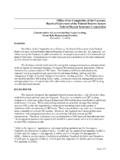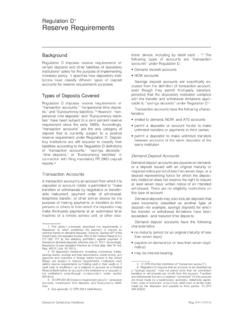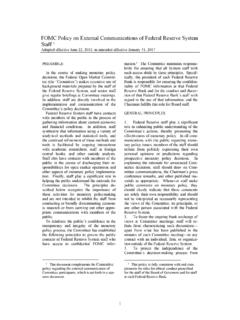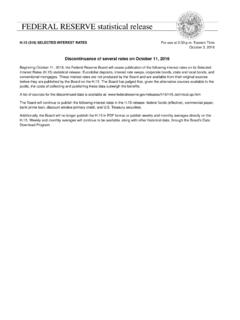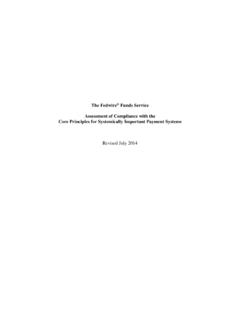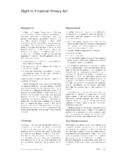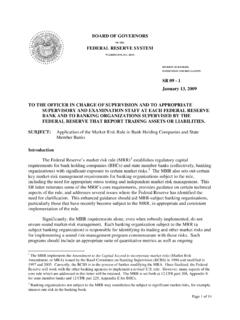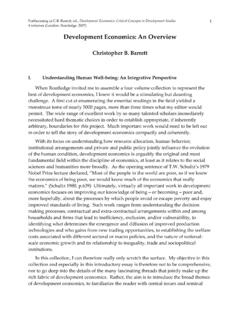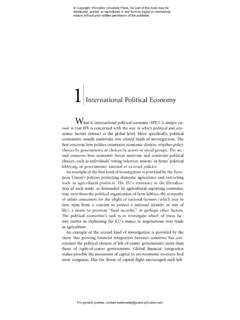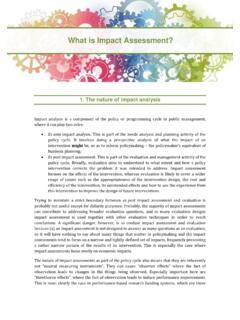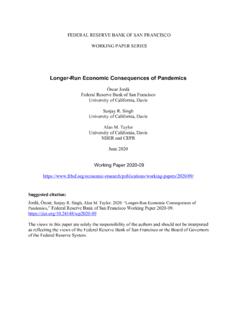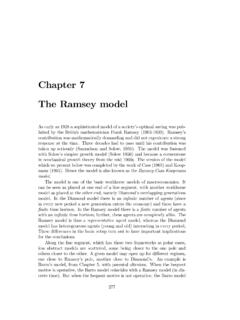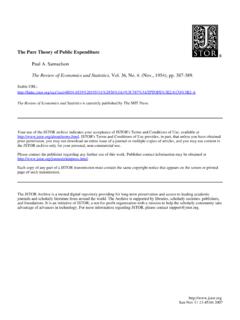Transcription of Measuring Geopolitical Risk - Federal Reserve
1 Measuring Geopolitical Risk Caldara, Dario and Matteo Iacoviello International Finance Discussion Papers Board of Governors of the Federal Reserve System Number 1222 February 2018 Please cite paper as: Caldara, Dario and Matteo Iacoviello (2018). Measuring Geopolitical Risk. International Finance Discussion Papers 1222. Board of Governors of the Federal Reserve System International Finance Discussion Papers Number 1222 February 2018 Measuring Geopolitical Risk Dario Caldara and Matteo Iacoviello NOTE: International Finance Discussion Papers are preliminary materials circulated to stimulate discussion and critical comment.
2 References to International Finance Discussion Papers (other than an acknowledgment that the writer has had access to unpublished material) should be cleared with the author or authors. Recent IFDPs are available on the Web at This paper can be downloaded without charge from the Social Science Research Network electronic library at Measuring Geopolitical Risk Dario Caldara Matteo Iacoviello January 10, 2018 AbstractWe present a monthly indicator of Geopolitical risk based on a tally of newspaper articlescovering Geopolitical tensions, and examine its evolution and effects since 1985.
3 The geopolit-ical risk (GPR) index spikes around the Gulf War, after 9/11, during the 2003 Iraq invasion,during the 2014 Russia-Ukraine crisis, and after the Paris terrorist attacks. High geopoliticalrisk leads to a decline in real activity, lower stock returns, and movements in capital flows awayfrom emerging economies and towards advanced economies. When we decompose the indexinto threats and acts components, the adverse effects of Geopolitical risk are mostly driven bythe threat of adverse Geopolitical events. Extending our index back to 1900, Geopolitical riskrose dramatically during the World War I and World War II, was elevated in the early 1980s,and has drifted upward since the beginning of the 21st : Geopolitical Risk; Economic Uncertainty; War; Terrorism; Business CLASSIFICATION: C1.
4 D80. E32. version We thank Alessandra Bonfiglioli, Nick Bloom, Nathan Converse, Ricardo Correa, Chris Erceg, Colin Flint, Mas-simo Morelli, Bo Sun and seminar participants at the Federal Reserve Board, the Stanford Institute for TheoreticalEconomics, the Chengdu International Macro-Finance Conference, the CEF Conference in New York, the CentralBank of Chile, Pontificia Universidad Catolica de Chile, Bank of Italy, University of Cambridge, Bocconi University,DIW Berlin, and LSE. Joshua Herman, Lucas Husted, Andrew Kane, and Aaron Markiewitz provided outstandingresearch assistance.
5 All errors and omissions are our own responsibility. The views expressed in this paper are solelythe responsibility of the authors and should not be interpreted as reflecting the views of the Board of Governors ofthe Federal Reserve System or of anyone else associated with the Federal Reserve System. Federal Reserve Board of Governors. Email: Federal Reserve Board of Governors. Email: IntroductionEntrepreneurs, market participants, and central bank officials view Geopolitical risks as key de-terminants of investment decisions and stock market dynamics.
6 In a Gallup 2017 survey of morethan 1,000 investors, 75 percent of respondents expressed worries about the economic impact ofthe various military and diplomatic conflicts happening around the world, ranking Geopolitical riskahead of political and economic (2016) includes Geopolitical risk togetherwith economic and policy uncertainty among an uncertainty trinity that could have significantadverse economic effects. More recently, the European Central Bank, in its April 2017 EconomicBulletin, and the International Monetary Fund, in the October 2017 WEO, highlight geopoliticaluncertainties as a salient risk to the economic , the importance of Geopolitical risks in shaping the macroeconomic and financial cycleshas not been the subject of systematic empirical analysis.
7 The main limitation has been the lackof an indicator of Geopolitical risk that is consistent over time, and that measures in real timegeopolitical risk as perceived by the press, the public, global investors, and policy-makers. This is theperspective we adopt here. Using newspaper records, we construct a monthly index of geopoliticalrisk (GPR) and examine its evolution and determinants since 1985. We then study the economiceffects of Geopolitical risks, and find that higher Geopolitical risk depresses economic activity, lowersstock returns, and leads to flows of capital from emerging economies towards advanced construction of the GPR index involves three main steps: definition, measurement, the definition step, we follow one common usage of the term geopolitics, and refer toit as the practice of states and organizations to control and compete for territory.
8 In particular,we want to identify Geopolitical events in which power struggles over territories cannot be resolvedpeacefully. Accordingly, we define Geopolitical risk as the risk associated with wars, terrorist acts,and tensions between states that affect the normal and peaceful course of international risk captures both the risk that these events materialize, and the new risks associatedwith an escalation of existing the measurement step, we draw on the methodology pioneered by Saiz and Simonsohn (2013)and Baker, Bloom, and Davis (2016)
9 , and construct the GPR index with an algorithm that countsthe frequency of articles related to Geopolitical risks in leading international newspapers publishedin the United States, the United Kingdom, and Canada. These newspapers which includeTheNew York Times, theFinancial Times, andThe Wall Street Journal cover Geopolitical events that1 index is updated monthly and is available of global interest, which often implies involvement. Thus, the GPR index can be viewedeither as a measure of global Geopolitical risks that are relevant for major companies, investors, andpolicy-makers, or as a measure of risks that are mostly relevant from a North-American and plot the resulting benchmark index from 1985 to 2016 in Figure 1.
10 The three largest spikesare recorded during the Gulf War, after 9/11, and during the 2003 invasion of recently,the index spikes during the Ukraine/Russia crisis and after the Paris terrorist attacks. We alsoconstruct an historical version of the index dating back to 1899 and plotted in Figure 2 whichreaches its highest values at the beginning of World War I and World War II, as well as at the onsetof the involvement in the audit step, we assess whether the GPR index is an accurate measure of underlyinggeopolitical risks.
